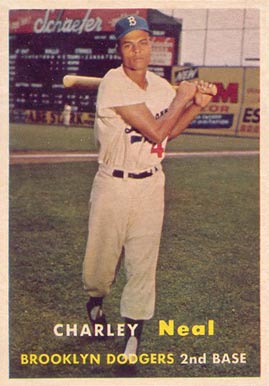California's Del Crandall played 16 seasons in the Major Leagues, including 11 years with the Milwaukee Braves from 1953-63. He began his career with the Boston Braves in 1949. Crandall spent two years in the military from 1951-52 before joining the Milwaukee Braves. He was an eight-time All-Star and four-time Gold Glove winner as a catcher.
As a Brave he played in the 1957 and 1958 World Series and hit a homer in each.
Following 11 seasons in Milwaukee, he spent aseason each with the Giants, Pirates and Cleveland Indians. He had a .254 career batting average with 179 home runs and 657 RBI in 1,573 games. With the glove Crandall made a mark in the NL. He led the league in putouts three times, in assists six times, runners caught stealing five times. He also led the NL in Total Zone Runs six times. I have absolutely no idea what that means, and I don't really care that I don't.
Crandall was back in Milwaukee as manager of the Brewers from 1972-75, where he went 271-338. He also managed the Mariners, coached for the White Sox and managed in the minors. He was a White Sox broadcaster as well. The Milwaukee Journal-Sentinal has an interview with the former Braves star online.
Hard to say where this shot was taken. Polo Grounds? Yankee Stadium maybe (World Series time?). Dunno. What I do know is that any card with a close up of the spectacular Braves' "M" cap is a winner.








































